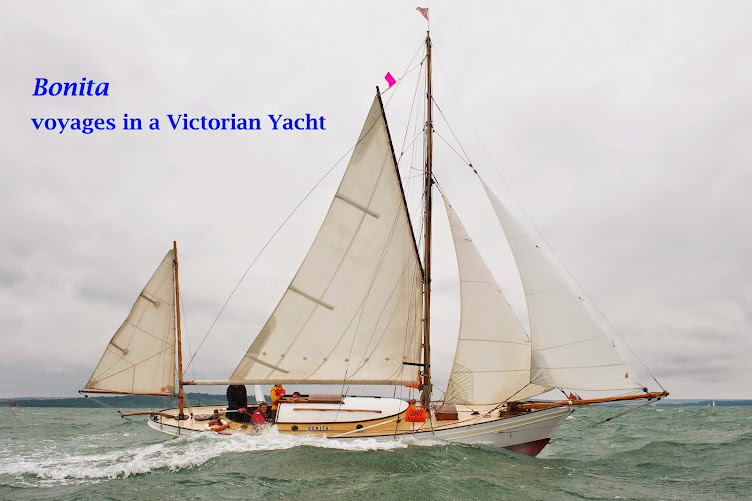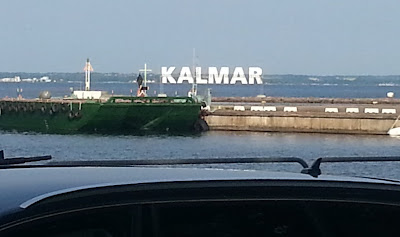Before we left Figeholm we bought fresh bread and pastries from the traditional baker's shop which opened at 7am. The whole day has been spent following narrow channels and threading between rocky islands working northwards up the East coast. There are so many small islands that the waves of the open sea get damped down so the waters are quite calm and only the outermost islands get exposed to any wave action.
The picture shows a very narrow channel between the islands of Grono and Spono with Calismarde following in Bonita's wake.
Unfortunately we found that Calismarde has been leaking, and we decided that she needs to be pulled out of the water for a proper inspection before returning home. So we have come to Västervik where there seem to be plenty of opportunity to get things fixed.
Plots below show today's complex network of islands and our overall Swedish progress:


















































